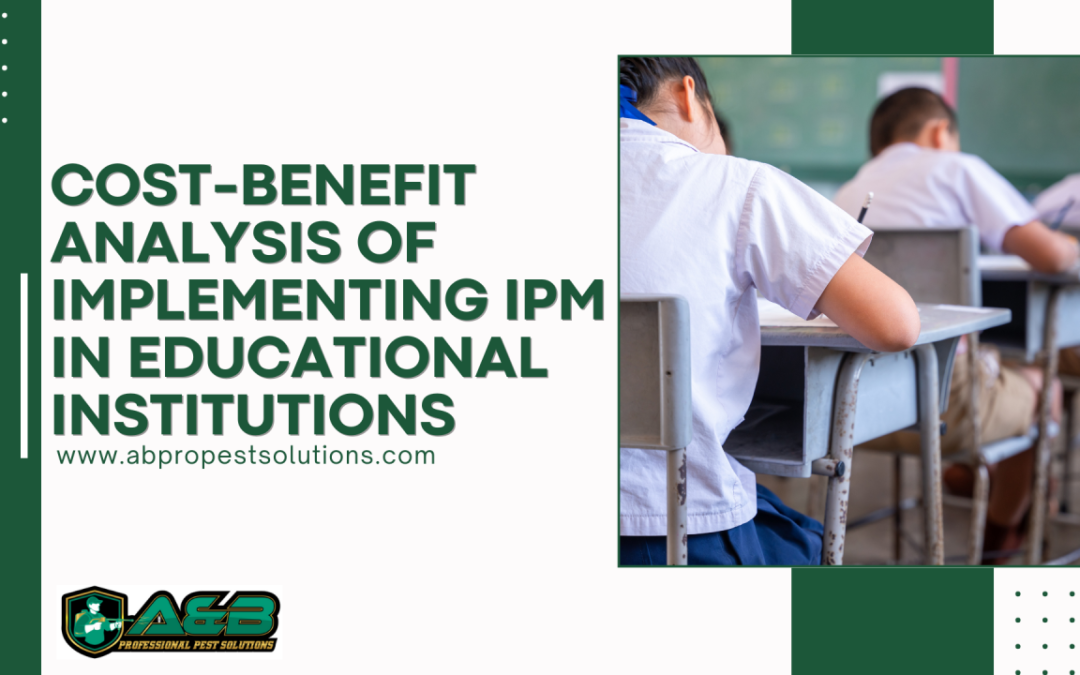Implementing Integrated Pest Management (IPM) in educational institutions offers numerous benefits, both financially and in terms of health and safety. This cost-benefit analysis will outline the expenses associated with IPM implementation and compare them to the benefits, including reduced pest management costs, improved health and safety, and enhanced regulatory compliance.
Costs of Implementing IPM
1. Initial Investment:
- Training: Educating staff about IPM principles, techniques, and conducting training sessions. This can involve costs for hiring external trainers or consultants.
- Equipment and Supplies: Purchasing monitoring tools (e.g., traps, sensors), exclusion materials (e.g., door sweeps, screens), and any necessary non-chemical control products (e.g., structural controls).
2. Operational Costs:
- Regular Inspections and Monitoring: Conducting frequent inspections and monitoring activities to identify and manage pest issues proactively.
- Maintenance: Ongoing maintenance of physical barriers and sanitation practices to prevent pest entry and harborage.
3. Administrative Costs:
- Documentation and Record-Keeping: Keeping detailed records of pest sightings, treatments, and preventive measures. This includes the time and resources needed for maintaining thorough documentation.
Benefits of Implementing IPM
1. Cost Savings:
- Reduced Pesticide Use: IPM emphasizes non-chemical control methods, which reduces the reliance on pesticides. This can result in significant cost savings over time as fewer chemical treatments are needed.
- Lower Long-Term Pest Control Costs: By addressing the root causes of pest problems and implementing preventive measures, IPM reduces the frequency and severity of pest infestations, leading to lower overall pest control costs.
2. Improved Health and Safety:
- Reduced Exposure to Chemicals: Minimizing pesticide use decreases the risk of exposure to harmful chemicals for students, staff, and visitors, promoting a healthier learning environment.
- Prevention of Pest-Related Health Issues: Effective pest management prevents pests such as rodents, cockroaches, and ants from spreading diseases and causing allergic reactions, which can lead to fewer health-related absences and incidents.
3. Enhanced Regulatory Compliance:
- Following Health and Safety Standards: IPM helps schools comply with health and safety regulations, including those related to pesticide use and pest management practices.
- Avoidance of Fines and Penalties: Compliance with regulations reduces the risk of fines and penalties associated with pest-related health violations.
4. Environmental Benefits:
- Sustainable Practices: IPM promotes environmentally friendly pest management practices that protect non-target species and reduce environmental pollution.
- Support for Biodiversity: Using non-chemical controls and habitat management supports local biodiversity and ecosystem health.
Implementing IPM in educational institutions involves initial and ongoing costs, primarily related to training, equipment, and regular monitoring. However, the benefits, including cost savings from reduced pesticide use, improved health and safety, regulatory compliance, and environmental protection, far outweigh these expenses. By investing in IPM, schools can create a safer, healthier, and more sustainable environment for students and staff.
To know more about A&B’s services, please visit the A&B’s website (www.abpestsolutions.com.ph) or Facebook Page (https://www.facebook.com/ABPestSolutions/) to know more about their services. A&B also disinfects workplaces or houses to kill COVID-19 Virus.
You may also contact: +63 905 496 4550 and +63 951 062 4830
A&B Professional Pest Solutions Corporation is located at the Ground Floor of Monterey Building at Genesis St., Centro de San Lorenzo, Santa Rosa, 4026 Laguna, Philippines

